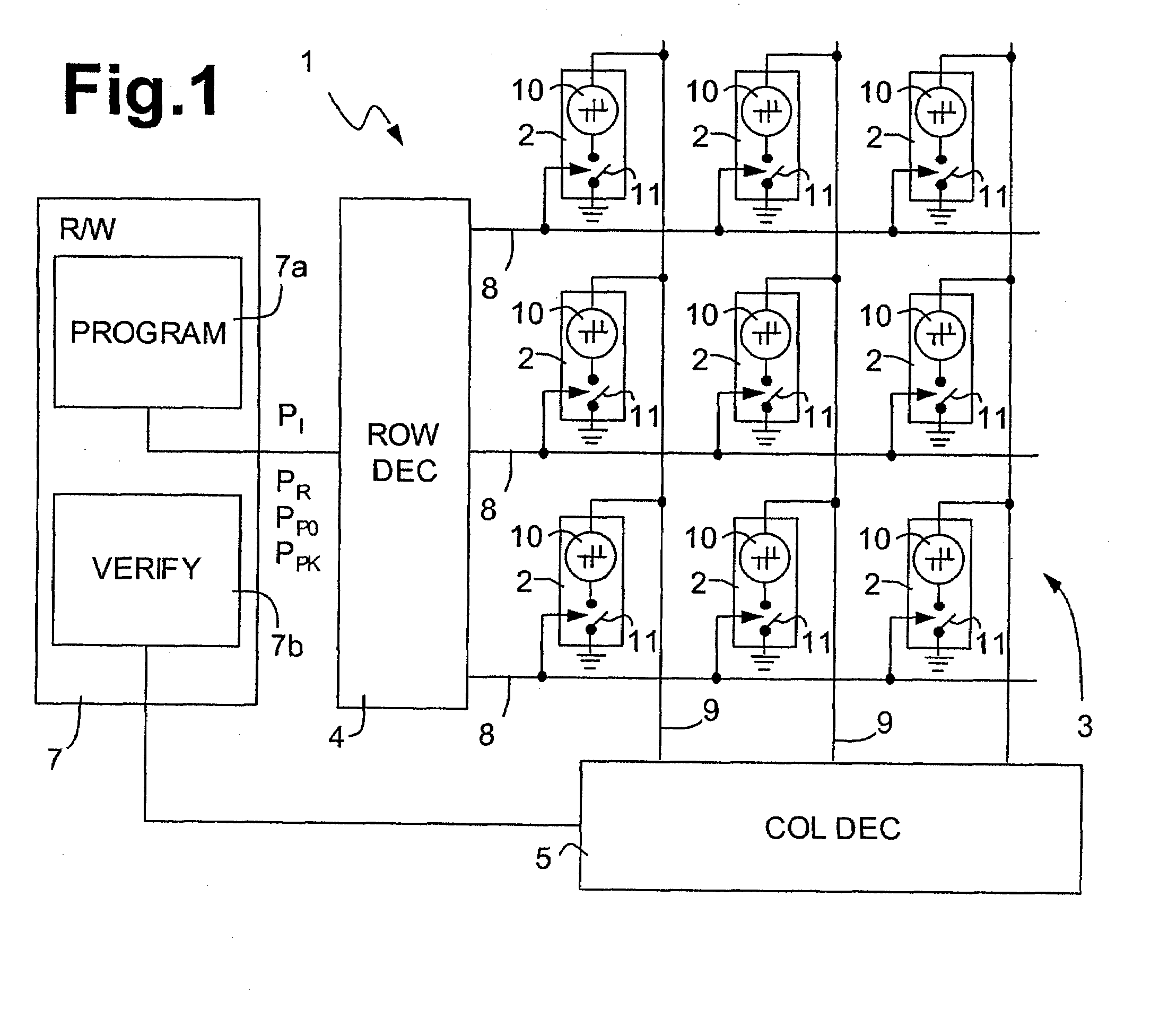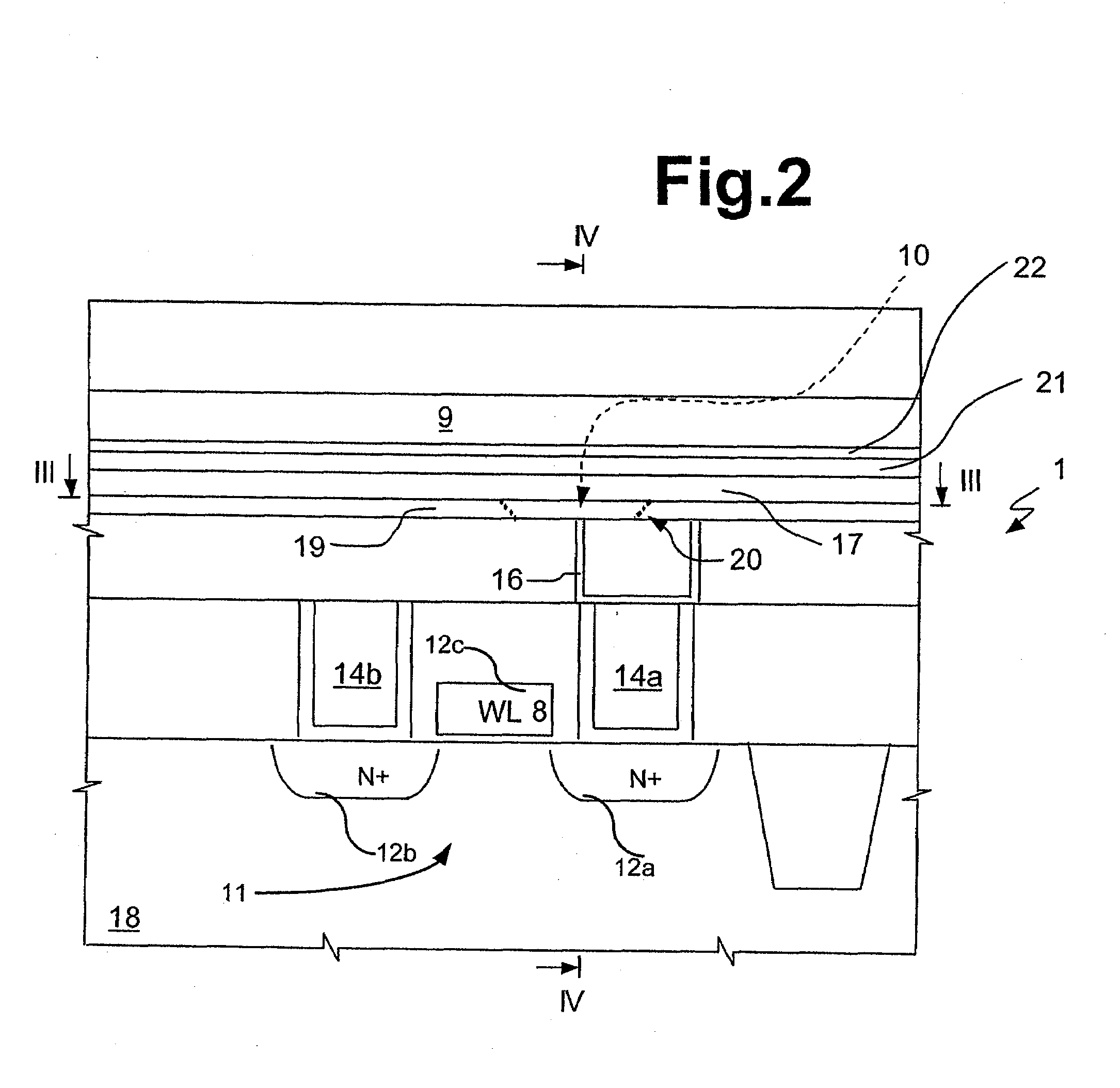Method for multilevel programming of phase change memory cells using a percolation algorithm
a phase change memory and percolation algorithm technology, applied in the field of multilevel programming of phase change memory cells and to multilevel phase change memory devices, can solve the problems of rapid resistivity drift, unstable resistivity of amorphous chalcogenic materials, and large amorphous regions still created, and subject to resistivity dri
- Summary
- Abstract
- Description
- Claims
- Application Information
AI Technical Summary
Benefits of technology
Problems solved by technology
Method used
Image
Examples
Embodiment Construction
[0030]FIG. 1 shows a phase change memory (“PCM” hereinafter) device 1. A plurality of PCM cells 2 are arranged in rows and columns to form an array 3. A row decoder 4 and a column decoder 5 are coupled to a read / write unit 7, which includes a programming circuit 7a and a verify circuit 7b. Word lines 8 and bit lines 9 run parallel to rows and columns, respectively, and are selectively connectable to the read / write unit 7 through the row decoder 4 and the column decoder 5, in a known manner.
[0031]PCM cells 2 are connected at a cross-point of a word line 8 and a bit line 9 and include a memory element 10, of the phase change type, and a selection element 11. The memory element 10 has a first terminal connected to its respective bit line 9 and a second terminal connected to a first terminal of the selection element 11. The selection element 11 has a second terminal grounded and a control terminal connected to a word line 8. According to alternative solutions, the memory element 10 and ...
PUM
 Login to View More
Login to View More Abstract
Description
Claims
Application Information
 Login to View More
Login to View More - R&D
- Intellectual Property
- Life Sciences
- Materials
- Tech Scout
- Unparalleled Data Quality
- Higher Quality Content
- 60% Fewer Hallucinations
Browse by: Latest US Patents, China's latest patents, Technical Efficacy Thesaurus, Application Domain, Technology Topic, Popular Technical Reports.
© 2025 PatSnap. All rights reserved.Legal|Privacy policy|Modern Slavery Act Transparency Statement|Sitemap|About US| Contact US: help@patsnap.com



